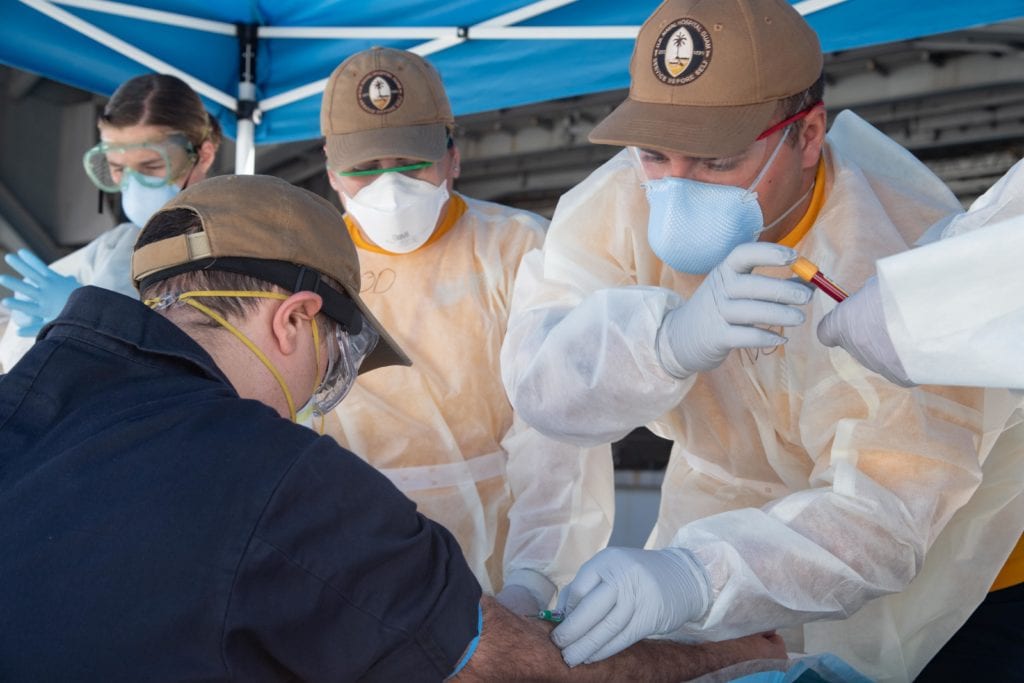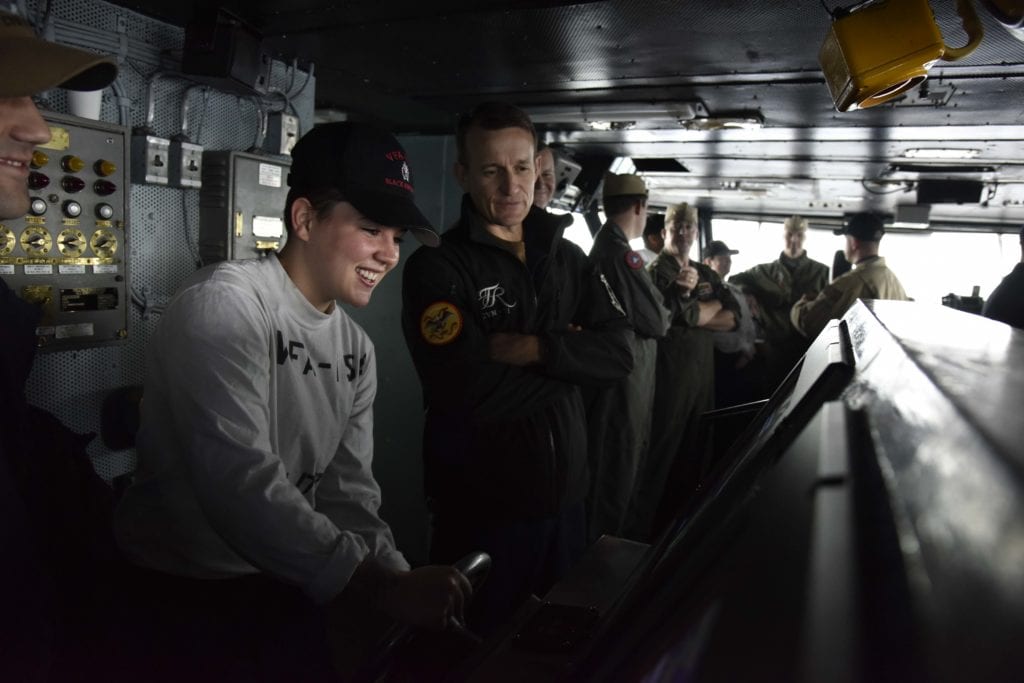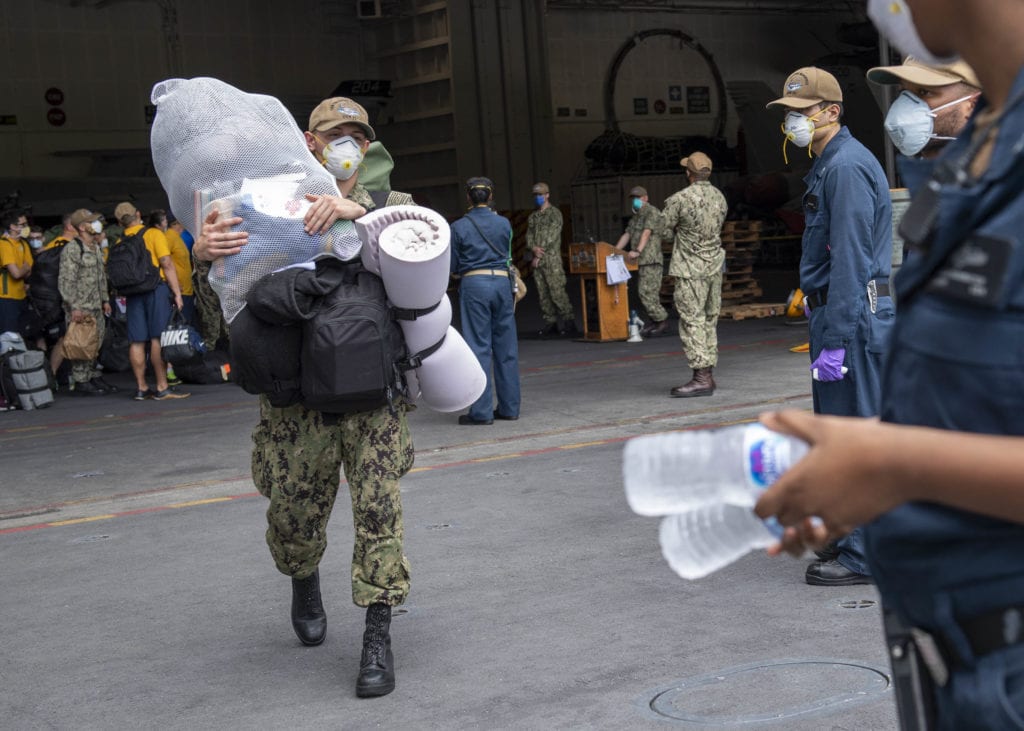
ARLINGTON, Va. — Acting U.S. Navy Secretary James McPherson has directed Chief of Naval Operations Adm. Mike Gilday to conduct a second deeper investigation of the events surrounding the COVID-19 outbreak on the aircraft carrier USS Theodore Roosevelt that has claimed the life of a Roosevelt Sailor, hospitalized others and infected hundreds more.
The results of a first preliminary investigation were forwarded last week by Gilday to McPherson, who took them under review. McPherson is a retired Navy flag officer in the Judge Advocate General Corps.
See: Navy Provides Medical Care to Infected Sailors of USS Kidd, Will Disinfect Ship
See: A Timeline From the First Month of the Outbreak in the Sea Services
See: Military Consumers React to Life During the Pandemic
“Following [discussion with Gilday], I have unanswered questions that the preliminary inquiry has identified and that can only be answered by a deeper review,” McPherson said in an April 29 statement.
“This investigation will build on the good work of the initial inquiry to provide a more fulsome understanding of the sequence of events, actions and decisions of the chain of command surrounding the COVID-19 outbreak aboard USS Theodore Roosevelt.”
Vice Chief of Naval Operations Adm. Robert Burke will be in charge of the second investigation, which is expected to wrap up by May 27, unless an extension is granted, according to an April 30 statement from Cmdr. Nate Christensen, a spokesman for Gilday. From there, Gilday is expected to review the results and issue any recommendations.

The Navy reported as of April 25 that the entire crew of the Theodore Roosevelt had been tested for the virus, resulting in 4,105 negatives but 833 positives — including the carrier’s former commanding officer, Capt. Brett Crozier.
Of the total cases, 112 Sailors had recovered and 4,273 Sailors from the Roosevelt had been moved ashore. Also, as of April 25, two of the ship’s Sailors were in U.S. Naval Hospital Guam under treatment for COVID-19 symptoms. Another Sailor died from complications of the infection, the Navy announced on April 13.
The Theodore Roosevelt’s public affairs office announced April 29 that the ship was preparing to return to sea following a bow-to-stern cleaning process. The crew members that were quarantined ashore are beginning to move back on board.
“This investigation will build on the good work of the initial inquiry to provide a more fulsome understanding of the sequence of events, actions and decisions of the chain of command surrounding the COVID-19 outbreak aboard USS Theodore Roosevelt.”
Acting Navy Secretary James McPherson
Since March 27, the Roosevelt has been sidelined in Apra Harbor, Guam. Crozier was relieved of his command on April 2 by then-acting Navy Secretary Thomas Modly after fallout from a letter written by the captain to his chain of command leaked to a San Francisco newspaper. A few days later, Modly flew to Guam to visit the ship and address the crew, but he stepped down on April 7 after his address — which was highly critical of Crozier — generated many calls for Modly’s resignation.
According to several press reports, Gilday recommended Crozier’s reinstatement to McPherson. Defense Secretary Mark Esper received a verbal update from Gilday on April 24. Another report said that U.S. Army Gen. Mark Milley, chairman of the Joint Chiefs of Staff, recommended the more extensive investigation.
Gilday had directed Burke to probe the circumstances and climate of the entire Pacific Fleet “to help determine what may have contributed to a breakdown in the chain of command,” Modly said April 2, the day he relieved Crozier as commander of the ship only months after Crozier had assumed command.
A day earlier, at a press briefing on the Roosevelt virus outbreak, Gilday spoke of “a potential comms breakdown, wherever it occurred. We’re not looking to shoot the messenger here, we want to get this right.”
Deputy Editor Scott Achelpohl and Seapower Correspondent John M. Doyle contributed to this report.

- SECNAV Advocates Increased Legal Immigration to Increase Shipbuilder Workforce - April 23, 2024
- Insitu Going Strong at 30, Focusing on Maritime Operations - April 8, 2024
- Navy Awards Boeing Additional Funds for MQ-25 Drones for Testing - April 3, 2024






